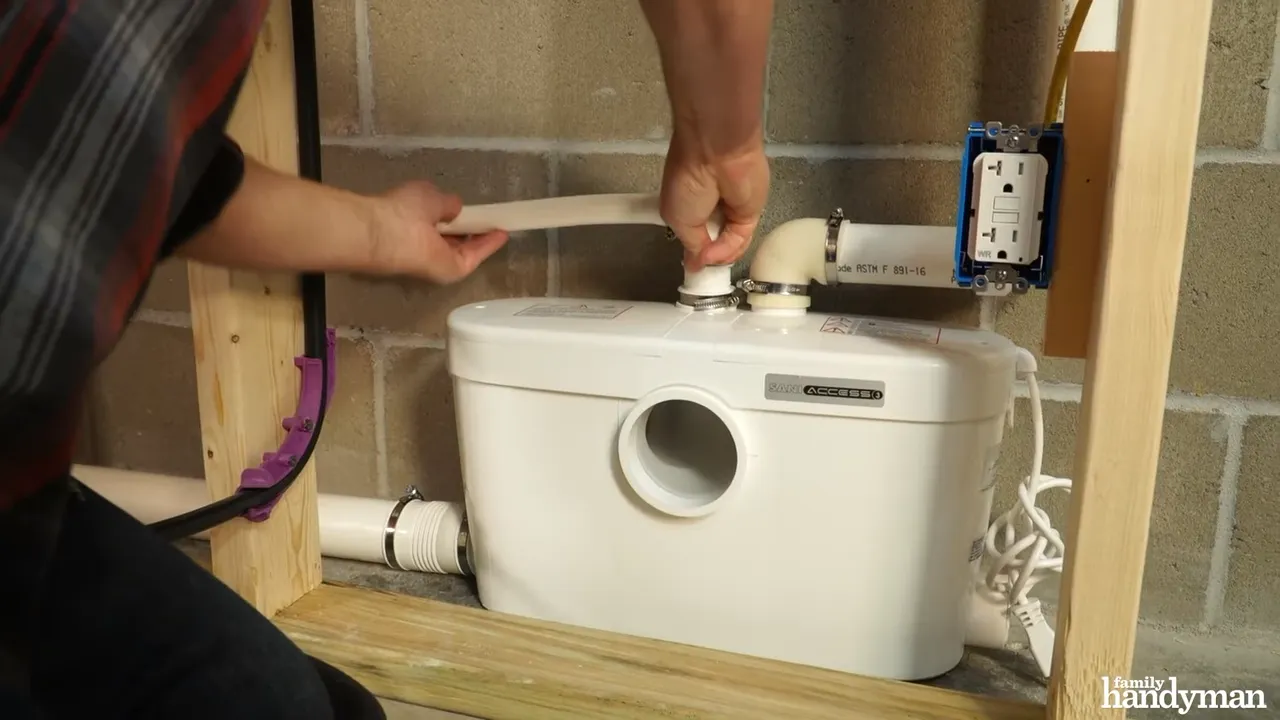To install a Saniflo toilet, follow these steps: First, ensure you have a proper drainage system in place. Then, connect the toilet’s discharge pipe to the Saniflo macerator unit.
Are you considering installing a Saniflo toilet in your home? This innovative toilet system offers a practical solution for properties without conventional plumbing layouts. Whether you’re adding a toilet to a basement, attic, or any other space where traditional plumbing is impractical, a Saniflo toilet can be the perfect choice.
We will walk you through the process of how to install a Saniflo toilet. By the end, you’ll have a clear understanding of the steps involved and be well-prepared for your installation project. Keep reading to learn more!
Tools And Materials Needed
Installing a Saniflo toilet requires a few essential tools and materials. Having these ready beforehand will ensure a smooth installation process. Here are the tools and materials you will need:
Saniflo toilet kit
The Saniflo toilet kit is the heart of the installation process, as it includes the macerator pump, toilet bowl, and all necessary connections. Ensure you have this kit ready before beginning the installation.
Adjustable wrench
An adjustable wrench will come in handy for securing and tightening various plumbing connections during the installation. Make sure you have a good quality adjustable wrench that fits different sizes.
Screwdriver
Having a screwdriver is crucial for removing or installing screws and fasteners. Keep a set of screwdrivers handy, including both flathead and Phillips head, as you may encounter different types of screws during the installation.
Plunger
A plunger is not just useful in unclogging toilets; it can also be helpful during the installation process. It can create the necessary pressure to seal the connections securely and prevent any leaks.
Hacksaw
A hacksaw is necessary for cutting pipes and other materials that may require adjustments during the installation. Make sure you have a sharp hacksaw for precise and clean cuts.
Silicone sealant
Using silicone sealant will help ensure a watertight connection between the different components of the Saniflo toilet system. Apply silicone sealant at the appropriate connections as instructed in the installation manual.
By having these tools and materials ready, you will be well-prepared to install a Saniflo toilet efficiently and effectively.
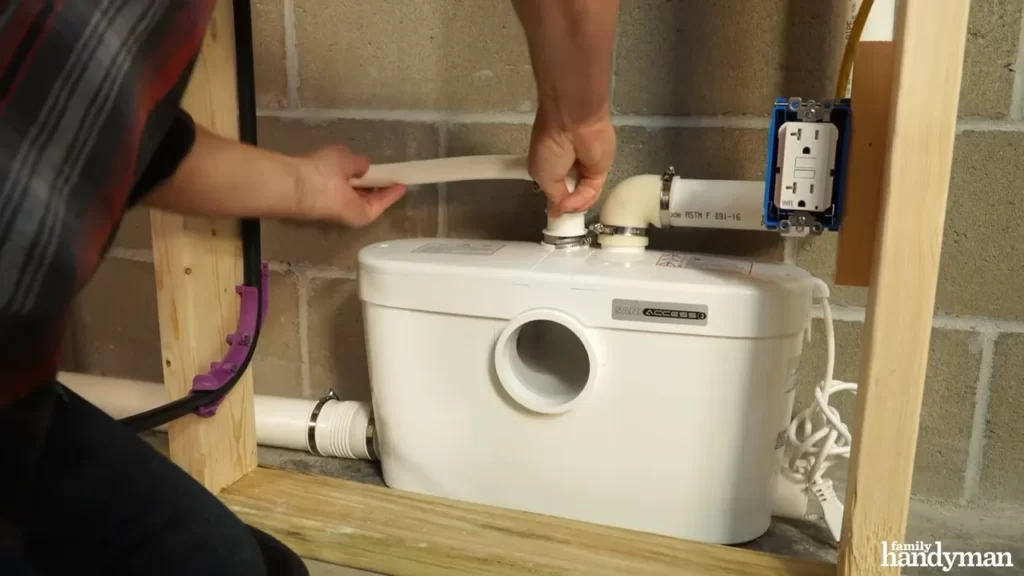
Pre-Installation Preparation
Before installing a Saniflo toilet, it’s crucial to undertake some necessary pre-installation preparations. These preparations will ensure a smooth installation process and compliance with local building codes and regulations. In this section, we will cover three important steps to take before you begin the installation.
Measure and Mark the Installation Area
The first step in the pre-installation preparation is to accurately measure and mark the designated installation area for your Saniflo toilet. This will help you determine the amount of space required and ensure that there are no obstructions in the area. Start by measuring the distance from the closest water source and ensuring that it meets the necessary requirements. Take note of any walls, pipes, or other structural elements that may affect the installation process.
Check Local Building Codes and Regulations
Prior to installing your Saniflo toilet, it is essential to familiarize yourself with the local building codes and regulations. These codes vary from one area to another and may dictate specific requirements for installing a toilet with a macerating system. Research and review the relevant codes to ensure that your installation complies with the necessary regulations. Non-compliance could lead to future complications and costly repairs or fines.
Gather All Necessary Tools and Materials
Another crucial step in the pre-installation preparation is to gather all the necessary tools and materials needed for the installation process. This ensures that you have everything at hand and eliminates the need for multiple trips to the hardware store during the installation. Refer to the manufacturer’s instructions for a comprehensive list of required tools and materials. Make sure you have all the items available before you start the installation to save time and effort.
By following these pre-installation preparation steps diligently, you will be well-prepared to install your Saniflo toilet efficiently and in accordance with local building codes and regulations.
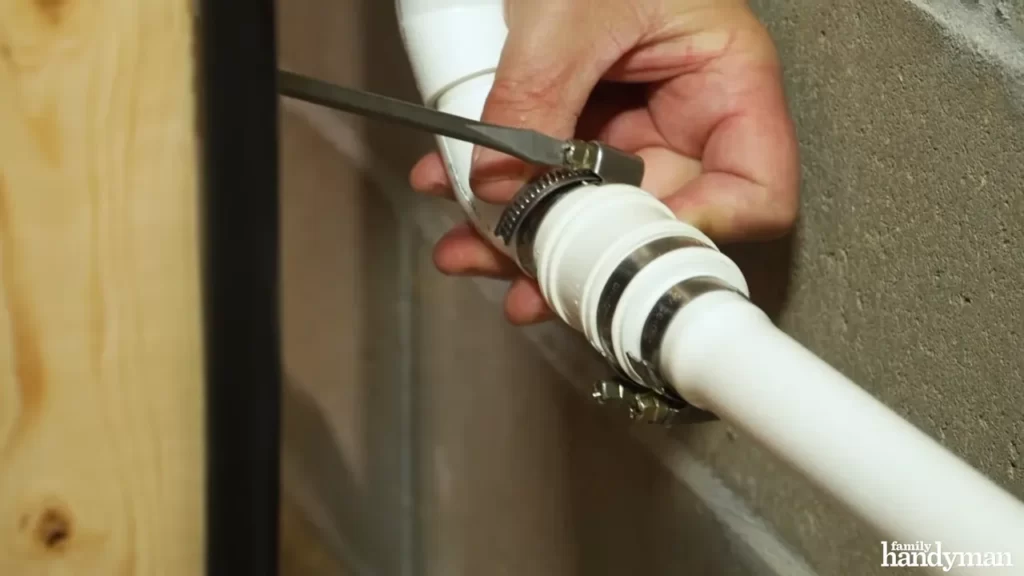
Installing The Saniflo Toilet
Installing a Saniflo toilet may seem like a daunting task, but with the right instructions, it can be a straightforward process. Whether you’re renovating a basement, adding a bathroom to a loft, or simply looking for a more efficient plumbing solution, the Saniflo toilet is a popular option.
Step 1: Shut off the water supply
The first step in installing a Saniflo toilet is to shut off the water supply. Locate the shut-off valve near the toilet and turn it clockwise until the water flow is completely stopped. This will ensure a smooth and mess-free installation process.
Step 2: Remove the old toilet
Once the water supply is turned off, you can now proceed to remove the old toilet. Start by disconnecting the water supply line from the bottom of the tank. Next, unscrew the bolts that secure the toilet to the floor. Carefully lift the toilet and set it aside, taking care not to spill any water or waste.
Step 3: Install the macerator pump
With the old toilet removed, it’s time to install the macerator pump. The pump is the heart of the Saniflo toilet system, as it is responsible for grinding waste and pumping it away. Make sure to follow the manufacturer’s instructions for proper installation, as the process may vary depending on the model you have.
Step 4: Connect the discharge pipe
Once the macerator pump is securely in place, it’s time to connect the discharge pipe. This pipe will carry the waste from the toilet to the sewage system or a designated drain. Ensure that the pipe is connected tightly to both the macerator pump and the drain, using appropriate connectors and seals to prevent any leaks.
Step 5: Install the toilet bowl and tank
With the macerator pump and discharge pipe in place, you can now install the toilet bowl and tank. Position the toilet bowl above the macerator pump, ensuring that it is aligned with the discharge pipe. Carefully lower the bowl onto the pump, making sure it sits securely and evenly. Attach the tank to the bowl, following the manufacturer’s instructions.
Step 6: Connect the water supply
Once the toilet bowl and tank are installed, you can now connect the water supply. Reattach the water supply line to the bottom of the tank, ensuring it is tightly secured. Turn on the water supply valve and check for any leaks. If there are no leaks, you’re ready to move on to the next step.
Step 7: Test the Saniflo toilet
Before considering the installation process complete, it’s important to test the Saniflo toilet. Flush the toilet several times to ensure that it is functioning properly. Listen for any unusual sounds or vibrations that may indicate a problem. Additionally, check for any leaks around the toilet base or the discharge pipe. If everything is working smoothly and there are no leaks, congratulations! You have successfully installed your Saniflo toilet.
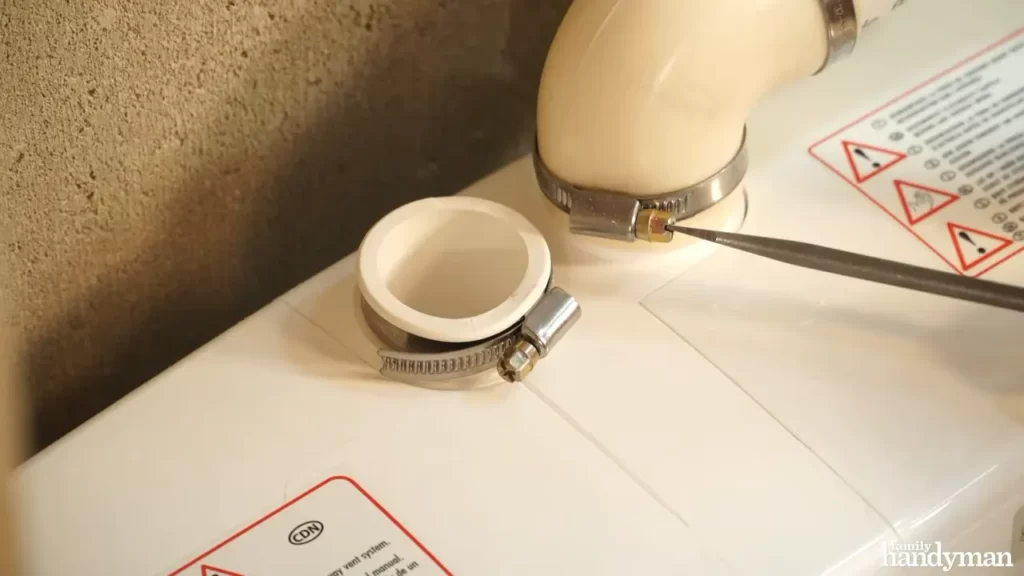
Troubleshooting Tips
If you’ve recently installed a Saniflo toilet and are experiencing some issues, don’t worry! Our troubleshooting tips will help you identify and resolve common problems that may arise. From minor adjustments to potential repairs, we’ve got you covered. Read on to find solutions for three common issues: toilet not flushing properly, leaks or water seepage, and unusual noises or vibrations.
Toilet not flushing properly
If your Saniflo toilet is not flushing as it should, a few possible causes could be at play:
- Check the water level: Ensure that the water level in the cistern is adequate. If it’s too low, adjust it according to the manufacturer’s instructions.
- Check the flapper valve: Inspect the flapper valve for any damage or debris that may be obstructing proper flushing. Clean or replace the flapper valve as needed.
- Inspect the macerator pump: The macerator pump is responsible for grinding waste before it is flushed. Make sure the pump is clean and free from any obstructions. Cleaning the toilet system regularly will help prevent blockages.
- Listen for unusual sounds: Unusual sounds during flushing may indicate a problem with the motor or pump. If you suspect an issue, contact a professional plumber for further inspection and assistance.
Leaks or water seepage
Discovering leaks or water seepage can be concerning. Here are a few steps you can take to address the issue:
- Inspect the connections: Check the connections between the toilet unit, macerator pump, and discharge pipe. Ensure they are securely fitted and there are no visible signs of leakage.
- Look for cracks or damages: Examine the toilet unit and pipes for any cracks or damages. If you find any, replace the affected components immediately to prevent further leaks.
- Check the seals: Inspect the seals around the toilet base and where the discharge pipe connects. If the seals are worn or damaged, replace them to prevent water seepage.
- Tighten loose fittings: Sometimes, leaks may occur due to loose fittings. Use a wrench to tighten any loose connections, ensuring they are secure.
Unusual noises or vibrations
If you notice unusual noises or vibrations coming from your Saniflo toilet, here are a few possible reasons:
- Check for loose parts: Inspect the toilet unit for any loose or detached parts. Tighten or reattach them as necessary.
- Examine the motor and pump: Unusual noises or vibrations can indicate issues with the motor or pump. Clean and lubricate the motor as per the manufacturer’s instructions. If the problem persists, it’s recommended to seek professional help.
- Ensure proper leveling: Improper leveling of the toilet unit can lead to vibrations. Use a spirit level to check and readjust if needed.
By following these troubleshooting tips, you can quickly identify and resolve common issues with your Saniflo toilet. Remember, regular maintenance and prompt repairs will help extend the lifespan of your toilet system and ensure its optimal performance.
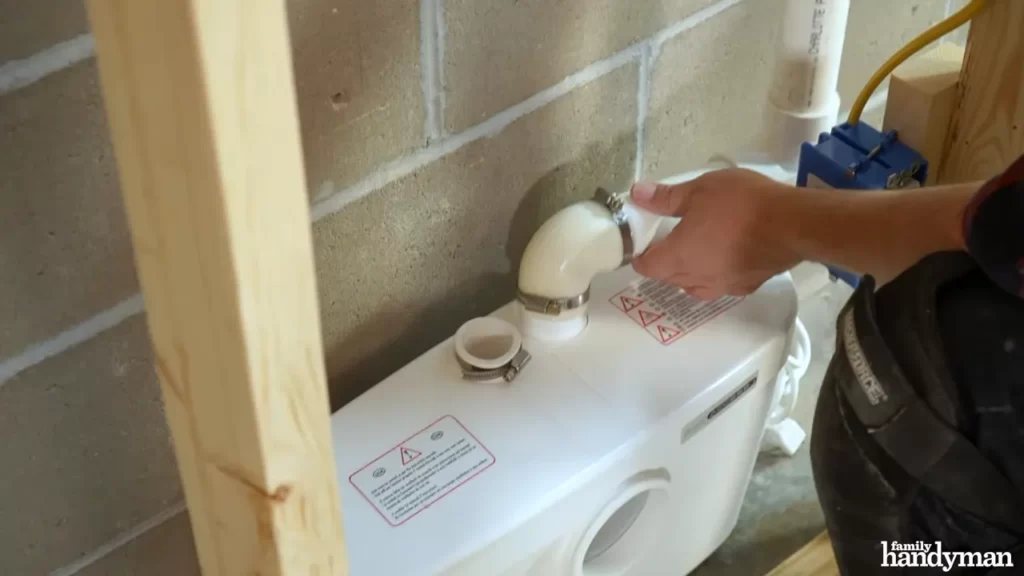
Maintenance And Care
Maintaining your Saniflo toilet is essential to ensure its proper functioning and longevity. By following a proactive maintenance routine and taking care of regular cleaning and inspection, you can avoid costly repairs and keep your Saniflo toilet in optimal condition. In this section, we will discuss three crucial aspects of maintenance and care for your Saniflo toilet: regular cleaning and disinfection, checking and tightening connections, and maintaining the macerator pump.
Regular cleaning and disinfection
Regular cleaning and disinfection of your Saniflo toilet are necessary to keep it hygienic and prevent any unpleasant odors. Here are some steps you can follow:
- Start by turning off the electrical supply to the Saniflo unit. This precautionary measure ensures your safety during the cleaning process.
- Remove any waste or debris from the toilet bowl. You can use a toilet brush to scrub off any stains or build-up.
- Prepare a mixture of mild detergent and warm water and use it to clean the exterior surfaces of the unit. Avoid using abrasive cleaners or chemicals as they may damage the Saniflo unit.
- Rinse the toilet bowl and the unit thoroughly with clean water to remove any residue from the cleaning solution.
- Lastly, disinfect the toilet bowl by using a suitable toilet disinfectant. Follow the instructions on the disinfectant for proper usage.
Checking and tightening connections
Regularly checking and tightening the connections of your Saniflo toilet is essential to prevent leaks and ensure optimal performance. Follow these steps for thorough inspection:
- Inspect the inlet and outlet connections to ensure they are securely fastened. If you notice any loose connections, use a wrench to tighten them gently.
- Examine the seals and gaskets for signs of wear or damage. Replace them if necessary to maintain a watertight seal.
- Check the venting pipe for any blockages or obstructions. Clear any debris that might interfere with the proper ventilation of the Saniflo unit.
Maintaining the macerator pump
The macerator pump plays a crucial role in the operation of your Saniflo toilet. Regular maintenance of the pump ensures its longevity and efficient performance. Here are some tips to maintain the macerator pump:
- Refer to the manufacturer’s guidelines for detailed instructions on cleaning and maintaining the macerator pump.
- Inspect the pump regularly for any signs of debris or build-up. If you notice any, you can remove them using a soft brush or cloth.
- Ensure that the pump is properly lubricated. Use the recommended lubricant and follow the manufacturer’s instructions for application.
- Regularly check the pump’s motor and impeller for any signs of wear or damage. If you notice any issues, contact a professional for further assistance.
By following these maintenance and care guidelines, you can ensure the smooth functioning of your Saniflo toilet and prolong its lifespan. Remember, regular cleaning, checking and tightening connections, and maintaining the macerator pump are key to avoiding unnecessary repairs and keeping your Saniflo toilet in optimum condition.
Additional Considerations
When installing a Saniflo toilet, there are several additional considerations to keep in mind. These factors can greatly impact the overall installation process and ensure that you make the most out of your new toilet system. In this section, we will explore three important components to consider: hiring a professional plumber, upgrading other bathroom fixtures, and understanding warranty and support options.
Hiring a professional plumber
Hiring a professional plumber is crucial when it comes to installing a Saniflo toilet. Although some homeowners may feel confident in their DIY skills, plumbing installations can be complex and require specialized knowledge. By hiring a professional, you can ensure that the installation is done correctly and up to code, minimizing any potential issues or complications down the line. Plumbers have the expertise to navigate any unforeseen challenges and can provide advice on the best location for your Saniflo toilet.
Upgrading other bathroom fixtures
While installing a Saniflo toilet, it may be an opportune time to consider upgrading other bathroom fixtures. This could include replacing outdated faucets, showerheads, or even the bathroom vanity. Upgrading these fixtures simultaneously can give your bathroom a cohesive and modern look, enhancing the overall aesthetic appeal. Additionally, upgrading fixtures now can save you time and money in the long run, as it eliminates the need for separate installations later.
Understanding warranty and support options
Before finalizing your purchase, take the time to understand the warranty and support options provided by Saniflo. Different models may come with varying warranty terms, so it is essential to review the details and know what is covered. Knowing the warranty and support options will give you peace of mind, as you can rest assured that any unexpected issues will be taken care of by the manufacturer. Familiarize yourself with any maintenance requirements outlined in the warranty, ensuring proper care to maximize the longevity of your Saniflo toilet system.
Frequently Asked Questions
Can You Install Saniflo Yourself?
Yes, you can install Saniflo yourself. It is a DIY-friendly option for adding a toilet or bathroom where traditional plumbing is difficult. Just make sure to carefully follow the installation instructions provided by Saniflo to ensure proper setup and functionality.
Do You Need A Water Supply For A Saniflo Toilet?
Yes, a water supply is required for a Saniflo toilet to operate effectively.
Can I Install A Saniflo Toilet?
Yes, you can install a Saniflo toilet. It is a simple and efficient solution that allows you to add a toilet anywhere you want, even in challenging locations. Saniflo toilets use macerating technology to pump waste to the main drain line.
They are easy to install and require minimal construction work.
Do You Need A Soil Pipe For A Saniflo Toilet?
No, a soil pipe is not needed for a Saniflo toilet. Saniflo toilets use a macerating system to break down waste, allowing it to be pumped through small pipes. This makes it possible to install a toilet in areas without traditional plumbing connections.
Conclusion
Installing a Saniflo toilet can be a game-changer for your home’s plumbing system. With its easy installation process and compact design, it offers a convenient and efficient solution. By following the step-by-step guide in this blog post, you’ll be able to successfully install your Saniflo toilet without any hassle.
So, say goodbye to traditional plumbing limitations and embrace the versatility and convenience of a Saniflo toilet. Upgrade your bathroom today!
